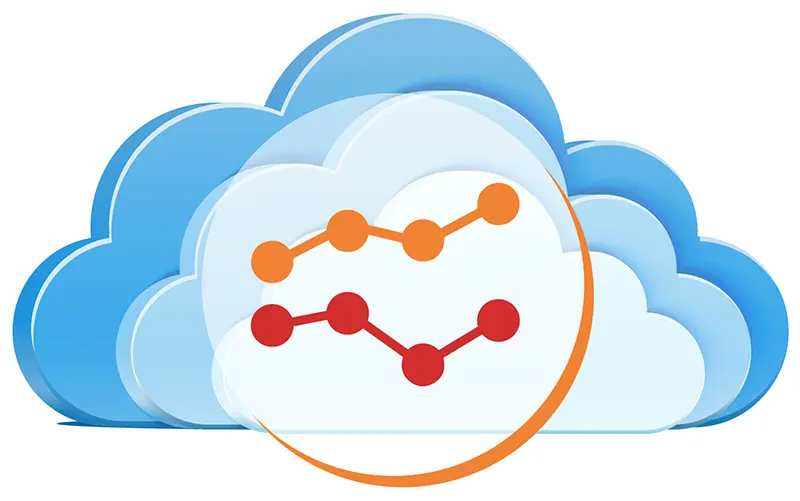Table of contents

In 2024, cloud computing has become essential, with rapid technological advancements making it crucial for boosting efficiency and fostering innovation within businesses. Recent global disruptions, including the COVID-19 pandemic and volatile market conditions, have accelerated our shift toward digital solutions, intensifying reliance on cloud technology and redefining resilience and adaptability in the business landscape. As we navigate this evolving environment, it’s essential to explore the key cloud computing trends 2024, understand the drivers behind cloud adoption, and adopt best practices to succeed in your cloud journey.
Key motivations for adopting cloud technology
The need for enhanced agility and scalability drives the shift toward cloud technology. As artificial intelligence (AI) gains traction and multi-cloud strategies reshape the cloud computing landscape, businesses increasingly recognize the cloud’s role in advancing their operations.
Cloud advancements offer substantial benefits, including improved operational efficiency, which helps businesses streamline processes and enhance overall effectiveness. Additionally, the cloud addresses the complex demands of today’s business environments with greater flexibility, enabling organizations to adapt swiftly to changing conditions. Moreover, cloud solutions enhance compliance, making it easier for businesses to meet evolving regulatory requirements.
These advantages highlight why more companies are adopting cloud technologies. By moving away from traditional setups, businesses can scale resources seamlessly and accelerate product delivery, which is essential in today’s fast-moving market.
Are you prepared to fully leverage the cloud’s potential? Explore the five key trends to stay informed and strategically positioned for success.
Key trends in cloud computing for 2024-2025
What are the significant trends shaping the cloud computing landscape this year? Here are five factors poised to influence your cloud journey, whether directly or indirectly:
Hybrid and multi-cloud adoption
The future of cloud computing is hybrid. Organizations are blending on-premises and cloud services to optimize operations and bolster security. Additionally, the trend toward adopting cloud platforms from multiple vendors continues to rise, with vendors making significant advancements to support these multi-cloud environments.
Increased investment in cloud security and resilience
With the escalation of cyber threats, safeguarding data in the cloud is more critical than ever. Investing in robust cloud security measures is essential for maintaining data protection and regulatory compliance, ensuring the integrity and safety of your business information.
Data fabric and data mesh
As hybrid and multi-cloud adoption grows, businesses face the challenge of integrating diverse data sources from various systems. This process has brought data fabric and mesh technologies to the forefront, providing practical solutions for managing and unifying data across complex environments.
AI and machine learning integration
Cloud solutions increasingly leverage artificial intelligence (AI) and machine learning (ML). These technologies offer considerable benefits, including time savings, cost reductions, and enhanced decision-making through advanced insights. The growing focus on AI and ML underscores their value to vendors and consumers.
No-code and low-code cloud services:
Cloud adoption stages
Adopting cloud technology is a strategic journey that involves several key stages. Here’s a breakdown of the process:
Project
Begin by focusing on specific projects that address particular needs. Assess the required skills, evaluate your in-house resources, and identify areas where external support may be necessary. Completing individual projects will help you build confidence and lay the groundwork for a robust cloud infrastructure.
Foundation
Expand your cloud presence gradually, establishing a scalable and secure base for more ambitious projects. This stage involves creating a solid cloud infrastructure that supports your growing needs and prepares you for future developments.
Migration
Migrating critical datasets and legacy systems is crucial in transitioning to long-term cloud operations. As you build a cloud center of excellence, this stage focuses on ensuring a smooth and effective migration process.
Optimization and reinvention
Make the cloud central to your operations by continuously optimizing systems and processes. This stage concerns refining and enhancing your cloud environment to drive ongoing improvements and innovation.
Best practices for cloud migration and optimization
Navigating the path to cloud adoption comes with challenges, from security concerns to migration complexities. However, addressing these challenges effectively can lead to continuous innovation and operational optimization. Here are some best practices to guide you through the process:
Future-proof your architecture
Design adaptable systems that can integrate emerging technologies and respond to market shifts. Ensuring your cloud infrastructure is future-proof helps maintain its relevance and resilience.
Start small
Begin with manageable projects that yield quick results. This approach helps build confidence and provides a solid foundation for more ambitious cloud initiatives.
Customize your cloud strategy
Tailor your cloud solutions to fit your specific requirements. There is no universal approach, so adapt strategies to meet your unique business goals.
Build a robust foundation
Develop a strong and scalable cloud infrastructure to support your business’s growth and adapt to evolving needs. A solid foundation is crucial for long-term success.
Leverage external expertise
Collaborate with third-party experts to complement your internal capabilities. This partnership can help accelerate cloud projects and bring valuable insights.
Embrace cloud-powered success
As you explore the expansive potential of cloud computing in 2024, adopting a strategic approach is crucial for staying competitive and resilient. Gartner projects that “85% of organizations will adopt a cloud-first strategy by 2025,” underscoring the increasing importance of cloud technology. With customer expectations continuously rising, mastering the complexities of cloud migration and modernization will be essential. However, these projects often face unforeseen challenges, making it vital to stay informed about current trends to navigate potential obstacles and achieve cloud-powered success effectively.
Cloud migration is one way to modernize a company’s IT infrastructure, consolidate data from disparate systems, and facilitate seamless transitions to cloud-based platforms. For this purpose, Hystax Acura Cloud Migration is the right software product. It would help move your workloads to any cloud or another cloud-based platform quickly and effortlessly.
Learn more about Hystax Acura Cloud Migration’s key benefits →